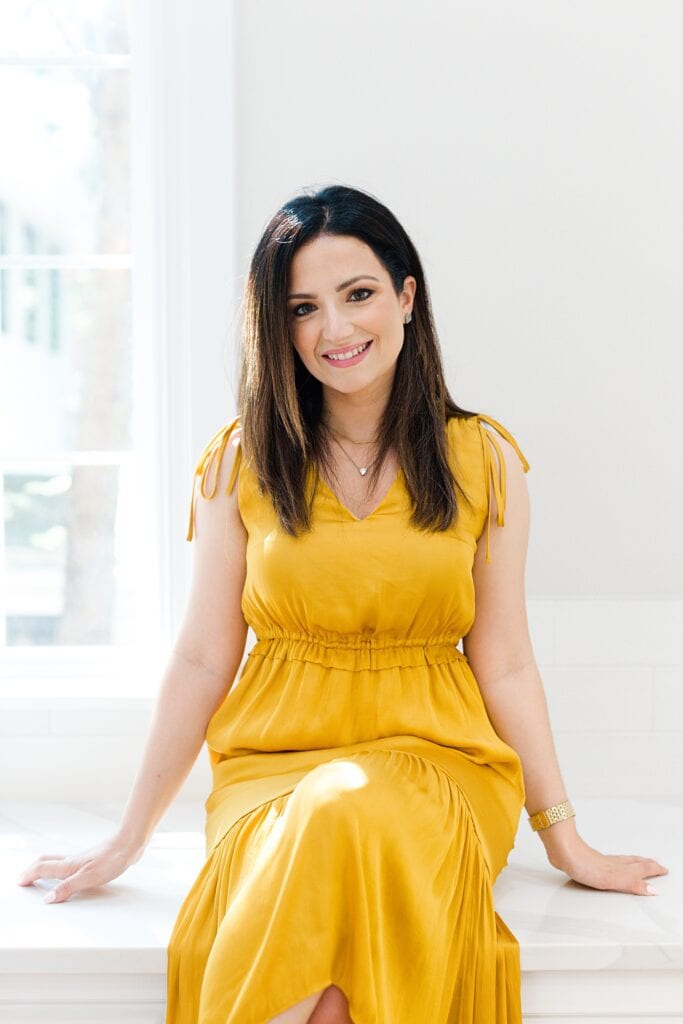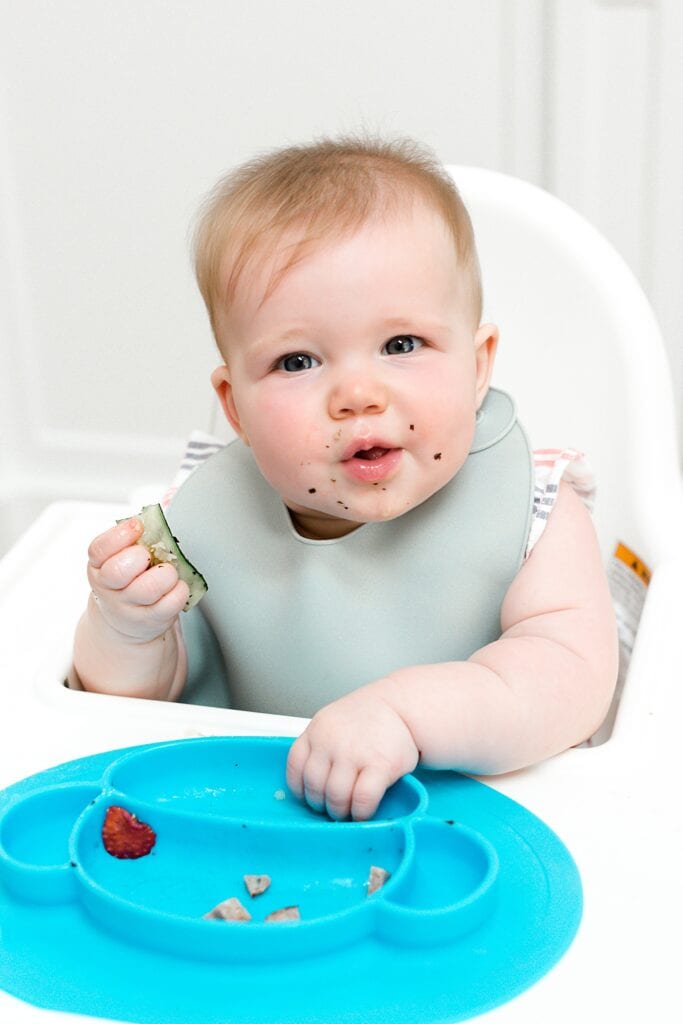
Let’s talk about toddler sleep problems, which I know a lot of parents out there go through consistently! Nothing is more exhausting, and frustrating, then when your toddler flat out protests bedtime or does the typical bedtime stalling. I’m talking about the “I’m thirsty” response you get as soon as you declare bedtime (where does this sudden love of water come from anyways?!). Maybe you’re struggling with keeping your toddler in their own bed, and are waking up every night to them sneaking in your bed hoping to go unnoticed. Let’s not forget about the toddlers that are terrified of monsters under their bed, or creeping in their closet, and the shadows in their rooms…so they request to sleep with 3 night lights. Whatever issue you’re having, rest assured you’ll learn so many toddler sleep tips today that I know will help any of these situations!
Who better to help us out with this than Becca Campbell, who is a dear friend of mine and is also a sleep consultant. She has two beautiful daughters, and on top of that, she makes it her mission to help thousands of families resolve exhausting sleep habits. Her E-Coaching programs and her paid membership, The Sleep Society, help to make sleep a thing for families! She was a guest on my podcast in Season 1, where she shared her knowledge on infant sleep and I was lucky enough to have her come back on this week’s podcast episode to give you some tips on common toddler sleep problems!
I compiled some commonly asked questions, and Becca was able to share her best tips and tricks! So, let’s get right to it!
Is it too late to sleep train a toddler?
At this point, you’re probably thinking you waited too long to start sleep training, but it’s never too late to learn something new, just like we learn new skills everyday! The key is to think positively, and go into the process with the “can’t teach a dog new tricks” mindset. When you think negatively, and have this expectation that your toddler can’t learn how to sleep because they’re older, you’re already setting your mindset up for failure! Of course, given that toddlers can be a bit challenging at times, and strive to have independence, it can be harder to start toddler sleep training, compared to starting it with a baby.
Are there differences between sleep training toddlers vs. a babies?
Fortunately, you can sleep train both, but it’s just a different strategy and approach. The biggest difference is the development at each age. When you teach a baby to sleep, you’ll get a bit of protest and crying at the beginning, but they won’t tell you “No, I don’t want to do that!” or “No, I don’t want to go to bed!”. If you’re parenting a toddler, you know very well that’s a toddler thing! When you start with toddler sleep training you’re also dealing with their personality and their temperament, which can end up making things more challenging!
If you’re really nervous or struggling to start sleep training, the best thing to do is to think of the end goal and keep that in the back of your mind. The end goal with sleep training your toddler is to have a fun bedtime routine, be able to say goodnight, walk out of the room, and they fall asleep within 10 minutes and sleep all night long – all by themselves! Just like any new skill, this takes practice and it isn’t a fast paced plan (these typically don’t work for anybody). You’re likely not going to see results in 1 or 2 days, it can easily take the full length of Becca’s Toddler Sleep E-Coaching program, which is 21 days! With toddlers, you’re going to deal with challenges and setbacks because it’s a process, and they can be very stuck in their ways. This may sound daunting, but remember, it’s so worth it in the end!
Common toddler sleep problems
I really wanted Becca to outline the common sleep problems she sees, and give us some hope that there are solutions that can help! As usual, she came through and gave so many great tips!
If your toddler wakes up and won’t stay in their bed
This is one of the most common ones. Parents will get woken up by their toddler who needs cuddles, is scared of the dark, or let’s face it, they just want to be near them. So what can you do to get them to go to sleep and stay in their OWN bed? Building confidence is the underlying principle to fix this issue!
The only reason you would ever need to sleep train a toddler is because they’ve lost the confidence that they can figure out how to go to sleep themselves. If your toddler is coming to your bed at night, or if you still have to lay with them, it’s likely because they don’t believe that they know how to go to sleep on their own. This can happen, especially to toddlers who have always had someone help them fall asleep when they were a baby, and they forget the principles of being able to do it themselves. A fun bedtime routine can work wonders in helping them gain their confidence back! By establishing a bedtime routine, you’re giving them your attention and connection so they understand that this is their time with you, but when the bedtime routine has ended, it’s their job to sleep. Making sure their bedtime routine is always reliable, consistent, and nurturing, can make it easier for them when they have to go to sleep because all their needs are met, so when they go to sleep, they stay asleep!
A toddler who sleeps less when a new sibling arrives
Very common, and totally normal! Your toddler’s bedtime routine will likely be thrown off, or rushed, while everyone is trying to get back to normal or adjust. Unfortunately, toddlers can feel if things are being hurried along, and this can cause either resistance at bedtime, wake ups throughout the night, or early morning wake ups. Becca’s advice is to stick to your reliable bedtime routine as much as possible (allow yourself some grace here as you adjust), so you don’t have a toddler AND a baby waking up at all hours of the night.
Stalling before bedtime
“Mommy, just one more story!”, “Mommy, can I have a drink of water first?”, “Mommy, can you rub my back a little longer?” I’m sure to parents with toddlers and young children these all sound so familiar! Bedtime stalling is a normal thing, and can happen with any child, whether they’re a good sleeper or not. One suggestion is to take note of the requests they ask for or things they need when they stall. Children are pretty predictable and tend to ask for the same things consistently. Once you figure out all the things they usually need before bedtime, just include them in the bedtime routine!
One neat tool to use for this is a toddler colour clock, like the Hatch clock or the Mella clock, that uses colours to help give structure to bedtime. The colours used mean different things:
- Green = go get ready for bed
- Yellow = slow down for bed
- Red = time for sleep
- Blue/pink = time to get up
I always recommend including any stalling requests into the yellow phase to make them feel more manageable. If your toddler is younger, you can just use the “red” and “blue” phase and before it turns red, just ask them if they need anything.
Early morning wakings
Anyone can have an early morning wake, and they can start at any age, whether your child has been sleep trained or not. When we talk about early morning waking, this tends to become more of a problem when it happens a lot. As in, everyday between 4-6am. If your child wakes up early for a few days, it might just be a normal toddler sleep regression. But if your child is waking up every single morning between 4-6am, the first thing I would do is take a look at what happens within that first 15 minutes of getting up. If they get up in the first 15 minutes, and are given something they really look forward to (like a big cup of milk or their favorite movie), of course they won’t stay in bed!
Another thing to consider is how dark their room is. A lot of parents assume that as their kids get older they don’t need a 100% black out room for the best sleep. However, darkness is always the best sleeping environment – for everyone! Something that typically happens with toddlers, is they start having a fear of the dark, so for the sake of sanity, some parents will leave some lights on. Light can really affect early morning sleep because the last 2 hours of your sleep cycle is known as REM sleep or the “dream sleep”, which is a really light sleep. Because of this, lights or any noise, can easily make them wake up early, so making sure the environment is dark, and has soothing background noise (like a noise machine), can be key to solving sudden early morning wakings!
For a toddler who’s scared to go to sleep
Toddlers have wild imaginations, and they can get scared of the dark, or of monsters in their closet. This can cause some upsets at bedtime, or nightmares. This usually doesn’t happen until they’re around three or so, but it can happen in younger children if they have an older sibling who may mention these things around them. If they keep mentioning that they’re scared of things in the closet, or under the bed, you can analyze their screen time and see where they may be learning these things from. Maybe cut back on screens for a few days, for example, or take a look at any books they’ve been reading before bedtime.
Even though 100% darkness is the ideal sleeping environment for everyone, night lights are definitely okay in this situation. Especially, if it’s the only way they’ll go to sleep. If you are allowing a night light, you can either use the Mella or Hatch clock on the red setting for a dim light, or even a salt lamp. The reason these colors are the best is because they won’t interrupt your child’s sleep cycle, like white or blue lights will. You can even do a fun little monster hunt as part of their bedtime routine! Grab a flashlight and patrol their room, their closet, under the bed, and let them look for any “bad guys” lurking around. This can help eliminate their fear and anxiety. Another thing you can do is to clear out their room. If they have an abundance of toys and dirty clothes, or things everywhere – just clear it all out! A lot of times, clutter can heighten anxiety, and hypothetically, give monsters extra places to hide!
Are comfort stuffies in bed okay?
I love stuffed animals because it’s a comfort that they can control. However, some children have what seems like a million of them, which can make it difficult for them to sleep and ends up distracting them. If your toddler likes to line them up perfectly before bed, but then rolls around a lot and knocks them down, for example, this will distract them and wake them up constantly. For toddlers who don’t toss and kick around, having a formal set up of their stuffies may be totally fine! If it does become a problem, let them pick two to sleep with instead of them all. You can set up a little bed for the other stuffies so your toddler can tuck them in as part of their bedtime routine too. If they want different stuffies each night, just let them rotate them!
If you’re an exhausted toddler parent, I hope this gives you a sign of relief! Sleep is so important for everyone, and I hope today’s blog provided you with some tangible tips that you can use to figure out what may be causing your toddler’s sleep problems, and determine how to solve them.
If your toddler still relies on you to help them fall asleep, or ends up coming to your room in the night, Becca’s e-coaching program is just what you need! She currently has a Toddler E-Course for 17 months old to 3 years old, if they’re still in a crib, or a Preschool E-Course for 3-5 year olds (which can work for older children too). These courses walk you through gentle methods that help build your child’s confidence that they can sleep through the night on their own. If you’re just struggling with a few things, and have some general questions, you can join the membership, “The Sleep Society” to help!










